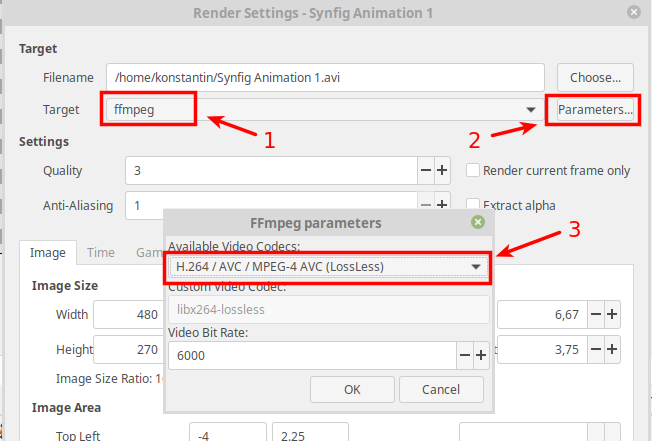


Selecting handle on the workarea now highlights the corresponding parameter in the Parameters Panel.Split and merged tangents now displayed in different way.Switch Group now displays “ghost” elements for missing switch elements.Time Loop Layer, Free Time Layer and Stroboscope Layer placed into separate “Time” category.Utilize multiple threads when rendering via CLI. Thanks to Ivan Mahonin.Completely reworked preferences dialogue. Thanks to Yu Chen (concept), Jerome Blanchi (implementation) and Caryoscelus (fixes).New converter: Animated File – allows to read waypoints from external files (only PGO files supported right now).New layer: Free Time – allows to animate time value (useful for making re-timing, slow-mo effect, etc).It can also render to a sequence of numbered image files, using formats such as PNG, BMP, PPM and OpenEXR.įrom version 0.62.00, Synfig has basic support for SVG import. Synfig can render to video formats such as AVI, Theora and MPEG, as well as animated graphics formats such as MNG and GIF. The files store vector graphics data, embed or reference external bitmap images, and also a revision history of the project. Synfig stores its animations in its own XML file format, often compressed with gzip. Synfig also works with High Dynamic Range Imaging. Other features include the ability to control and animate the width of lines at their individual control points, and the ability to link any related data from one object to another. There is also a wide variety of other real-time effects that can be applied to layers or groups of layers like radial blurs, color tweaks that all are resolution-independent.

The software is capable of simulating soft-shading using curved gradients within an area so that the animator doesn't have to draw shading into every single frame. The goal of the developers is to create a program that is capable of producing "feature-film quality animation with fewer people and resources." The program offers an alternative to manual tweening so that the animator does not have to draw each and every frame. Incremental and parallel rendering with Synfig Tool is supported by some open source render farm management software, such as RenderChan. As a true front-end and back-end application, it is possible to design the animation in the front-end, Synfig Studio, and to render it at a later time with the backend, Synfig Tool, on another (potentially faster) computer without a graphical display connected.


 0 kommentar(er)
0 kommentar(er)
